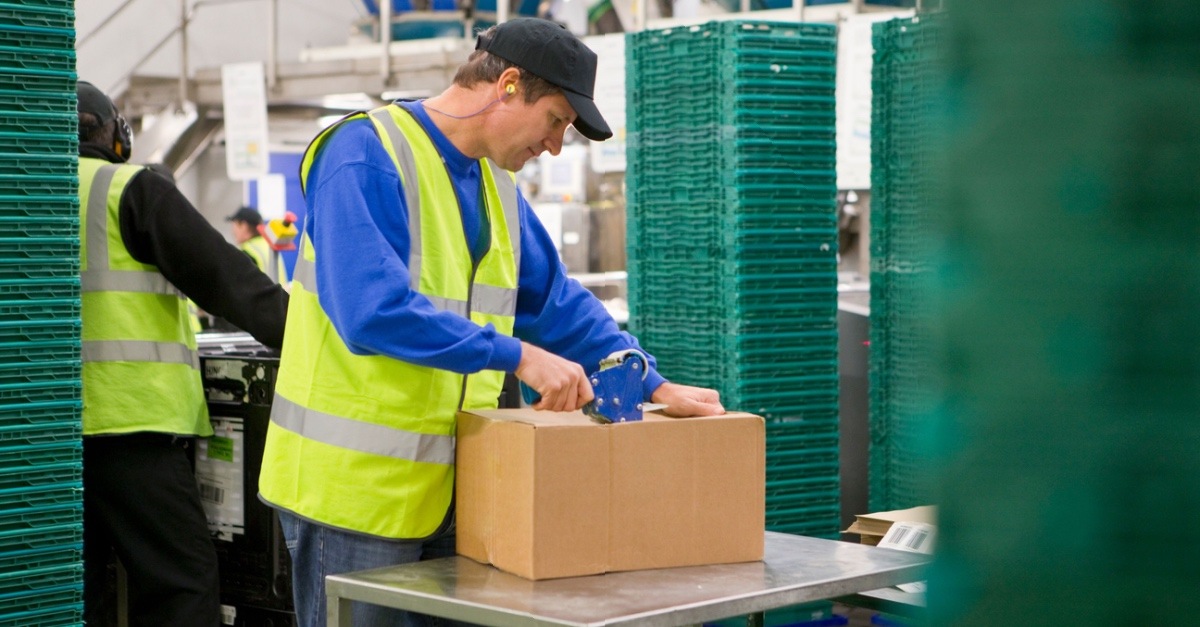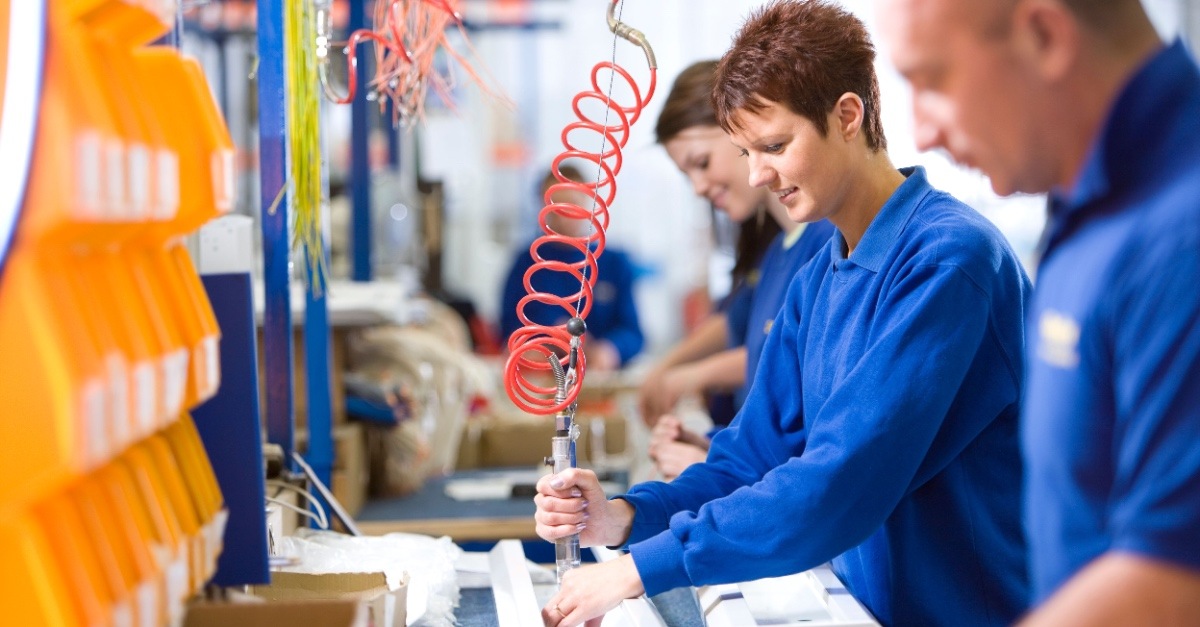5 min read
Problem and Solution: Leveraging Kitting and Assembly Services in the Modern Supply Chain
As supply chains are becoming increasingly complex, the demand for efficiency and flexibility has never been higher as companies strive to meet...
6 min read
Productiv : June 27, 2024

Kitting and assembly services are in high demand, as more and more businesses need to find ways to package components into new products for both B2B/retail and e-commerce customers, and do so in a scalable manner.
This is happening for a couple of reasons. There is an increasing need for customized fulfillment, as well as for greater efficiency in inventory management, and a better customer experience. Key drivers include e-commerce growth, demand for personalized products, the need to streamline supply chains, and the convenience of pre-assembled kits.
Companies are finding significant supply chain efficiency gains by shipping components from overseas, then assembling the kits here. Given the complexity involved, however, many are finding it makes economic and logistical sense to lean on a 3PL like Productiv, whose extensive kitting and assembly experience provide a high quality, reliable process.
Kitting and assembly services involve pulling together and packaging individual components based on specific customer requirements.
By utilizing kitting and assembly, companies can create greater efficiency in the production process, reduce labor costs, and achieve faster time-to-market. Overall, kitting and assembly services help optimize supply chain management.
There are different types of kitting and assembly, each serving a unique business purpose:
Subscription boxes are pre-kitted and stored for when they’re ordered, then picked, packed and shipped. There are two main flavors of subscription box kitting and assembly: batching and customized boxes:
Batch kitting involves creating uniform boxes with pre-selected items, which are processed in bulk. This approach streamlines operations, reduces costs, and ensures consistency in the subscription experience.
By sourcing and assembling products in large quantities, companies can achieve economies of scale, maintain quality control, and meet delivery schedules efficiently. Batch kitting is ideal for subscription services that offer standard monthly packages with uniform contents for all subscribers.
Customized boxes are used when you want to cater to individual customer preferences, personalizing the subscription experience. This requires a more complex fulfillment system, with each order unique based on customer choice or preferences.
Unlike batch kitting, customized boxes call for dynamic inventory management and tailored assembly, so each order meets individual specifications. Customized kitting improves customer satisfaction and loyalty, but does require more sophisticated logistics. It’s also more resource and labor intensive compared to batch kitting.
Kitting and assembly for retail store openings and store refreshes can get quite involved. Different stores can get different combinations of component parts that go into the kits. Elements include things like banners, display ads, window decals, tablecloths, and so forth. This kitting process requires taking the raw materials and/or printed goods, assembling them and shipping them out to the stores.
One popular use of retail kitting is for health & beauty goods. Component materials can come from manufacturers around the world, so receiving and inspection are done thoroughly and accurately. With cosmetics, materials need to be verified based on variations in color, fill, or size and checked for any potential damages before being received.
Effective inventory management is crucial in health & beauty kitting and assembly, due to the vast array of similar or nearly identical SKUs. Advanced inventory management software helps meticulously track each product's specific attributes, such as type, shade, or size.
Medical kits are used to provide efficient, safe, and effective healthcare services. Kits need to be sterilized and assembled correctly, as this ensures patient safety, reduces the risk of infection, and streamlines medical procedures. Sterilization requires strict adherence to hygiene standards in order to maintain the integrity of medical supplies. Making sure that kits are assembled accurately is equally vital, containing all the necessary components for a medical procedure or treatment, preventing errors and improving healthcare outcomes.
Typical items included in medical bundles include surgical instruments, syringes, gauze, and sutures as well as diagnostic tools, pharmaceutical products, and personal protective equipment (PPE). Each item is carefully selected based on how the kit is to be used in its intended setting, whether for surgical procedures, emergency care, diagnostic testing, or routine medical visits to a clinic or walk-in center. The bundling process requires highly accurate inventory management, quality control checks, and precision packaging so that all listed components are included and in pristine condition.
There are stringent regulations governing the preparation of medical kits, which are governed by health authorities like the Food and Drug Administration (FDA). These regulations call for strict compliance with Good Manufacturing Practices (GMP) and quality assurance standards, to promote the safety and efficacy of medical kits.
The kitting process typically includes sourcing high-quality components, sterilizing items, an assembly process in a highly controlled environment, and a stringent quality inspection process. Documentation and traceability are also crucial, so that each kit’s production and distribution is traceable and trackable for accountability and to facilitate recalls if necessary.
Another common type of kitting and assembly service involves relabeling or repackaging items for retailers. In this instance, individual SKUs that make up the kit components are taken out of sellable inventory, reworked and turned into a new SKU that can then be resold. This requires an inventory optimization program that can keep close tabs on the movement of SKUs in and out of sellable inventory, and creation of new kitted products.
Repacking is often done out on the warehouse floor, either on a tabletop, at the inventory location, or run through a conveyor for larger orders.
In terms of inventory management, the same repackaged product is often being prepared for multiple retail chains, each with its own unique packout requirements. This complicates kitting production as it requires switching back and forth from one process to another to meet your retail distribution commitments.
For instance, within one SKU of a finished kit, you may forecast Q3 demand of 50,000 units from retailer A, 40,000 units from retailer B, and 30,000 units from retailer C, for a total of 120,000 units. In addition, each company has its own unique packout requirements that have to be adhered to. The options then become, hold enough inventory to meet total forecast demand (120,000 units), or run a calculation based on historic order patterns from each retailer that’s below that figure.
In either scenario, retailer 2 may come in with an order twice as large as your forecast. You can short-ship the customer (bad option), wait for the manufacturer to produce more (not great), or rob Peter to pay Paul by “borrowing” units from retailer 3, then repacking and relabeling them for retailer 2. The shortfall can be made up by procuring more inventory before the order arrives from retailer 3. But it’s always a balancing act based on the relative priority of each B2B customer, and supplier lead times. This is an area where a 3PL well-versed in the nuances of retail kitting can provide strong consultative value.
We’ll look at two categories of kitting and fulfillment to provide practical examples.
Materials for cosmetic kits need to be verified based on variations in color, fill, or size and checked for any potential damages before being received. Productiv’s QC and line leads address issues on the spot, including shortages requiring replacement orders. This ensures adequate lead time so you can hit your retailer’s delivery-by date.
Once a shipment arrives and is inspected, Productiv’s team enters all shipment information into the warehouse management system (WMS). The system then creates a barcode “license plate” that is affixed to each single-SKU pallet. In a large warehouse with tens of thousands of SKUs, barcode scanning ensures that every product can be quickly located for picking and production, whether for kitting or shipping as an individual order.
For medical kits, there is often a materials procurement component that the 3PL handles on behalf of a company. This makes sense as you think about the logistics of production and their handle on units required for each run. Companies will pay a set fee for kitting, labor and materials.
Given the product's nature and regulatory aspect, lot tracking, expiration tracking, and documentation are required, both for individual components and the finished kits. Productiv can run a mock recall, a critical practice that ensures the destination of each individual item can be traced precisely based on lot code.
In terms of process optimization for kitting and assembly, a single-piece flow conveyor belt configuration can be 30% to 200% faster than a tabletop build, and quality can be better managed.
With medical kitting, for instance, there is a quality check at each step. If the station 3 associate is in charge of putting swabs next to collection tubes, and a kit comes along without one, the line is stopped due to a quality error. The error is corrected, and the line is restarted. In a table build scenario, a single associate is putting all the components together into a finished kit. If a mistake is made, it’s not caught until a QA check at the end of the process.
As kitting runs become larger, from 10,000 to 500,000 counts and above, it makes more sense to use a process-engineered conveyor setup with a single-piece flow to ensure that quality and efficiency are prioritized.
With demand growing across industries for kitting and assembly solutions, companies are looking for qualified partners to help them set up an efficient, quality process to save on rising supply chain costs. Depending on the product category and audience, different options need to be viewed through the twin lens of cost and customer requirements.
Productiv’s combination of lean processes, the latest technology and a deep talent bench help companies increase their kitting throughput and supply chain velocity without ever compromising on quality. Its comprehensive turnkey services, scalability and cost-per-unit pricing are the perfect combination of efficiency and performance. Productiv is built to exceed expectations on a wide variety of kitting and assembly jobs, specializing in tough, time-sensitive assignments. To learn more about the Productiv difference, talk to an expert today.
Get ideas on how to delight your customers with delivery on their timeline.

5 min read
As supply chains are becoming increasingly complex, the demand for efficiency and flexibility has never been higher as companies strive to meet...
4 min read
Improve your supply chain’s efficiency with 3PL kitting and assembly services tailored to your business. What Are Kitting and Assembly Services? If...

2 min read
Four Critical Steps to Lean Execution in Hand Assembly and Kitting Whether your organization is thinking about embarking on a lean journey, or has...